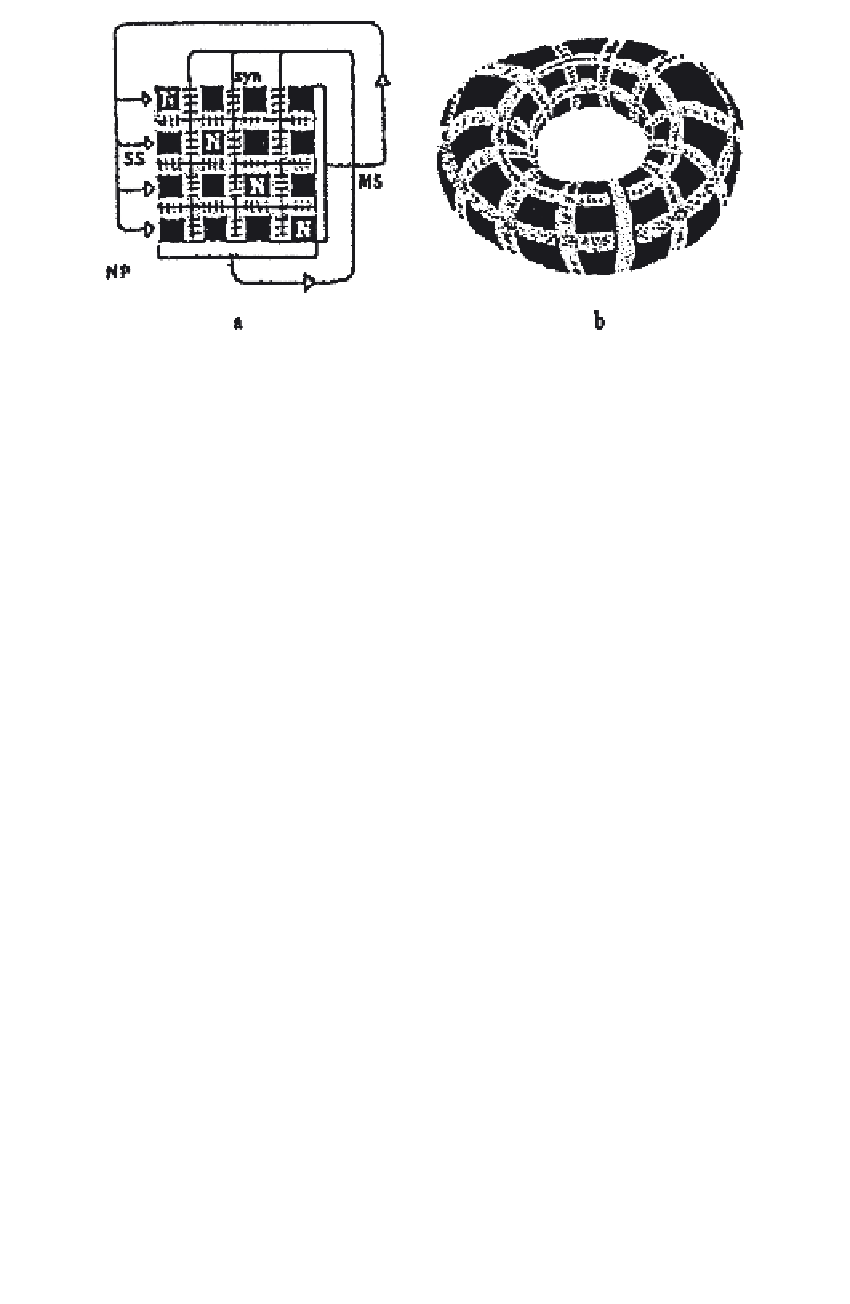Information Technology Reference
In-Depth Information
FIGURE 10.
the steroids that are poured into the synapses by the neurohypophysis,
which recursively regulate the neural transition functions. Once again, we
obtain the torus when we wrap the square scheme around both the hori-
zontal and the vertical axes (Figure 10b).
09. The closure theorem: “In every operationally closed system there arise Eigen
behaviors.”
Among the many variants and paraphrases of this astonishing theorem I've
picked Francisco Varela and Joseph Goguen's version, for I believe I see an
affinity here with the sociological vocabulary. The word “behavior,” as well
as “conduct,” “action,” etc., does imply the recognizability of regularities, of
“invariants” in the temporal course of the action. Here, among sociologists,
one is probably not as interested in whether the cosin or the sin appears as
the Eigen behavior of the system, but rather whether in a cultural domain
a meeting between two members of this cultural domain is celebrated by a
handshake or by bowing.
One could even go further and be on the lookout for the emergence of
invariants that arise when air is blown in a certain way through the vocal
cords, whose vibrations then elicit hisses and grunt with which the meeting
of two members of a cultural domain is celebrated and in the southern
regions of this geographic area are heard as “Hi, y'all” and in the northern
regions as “Hello there.”
In all that I have said up until now, I have tried to make it obvious that
these invariants, these “Eigen behaviors” arise through the recursively rec-
iprocal effect of the participants in such an established social domain.
Therefore, I'd like to turn back to the original question that was put to me:
“How recursive is communication?” and also to my proposal:
00. Communication is recursion

Search WWH ::

Custom Search